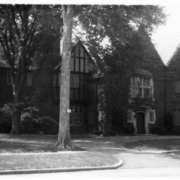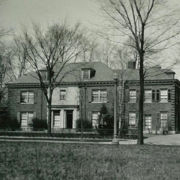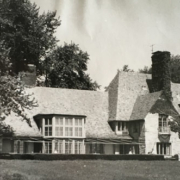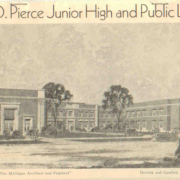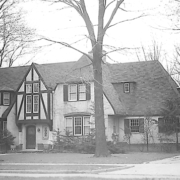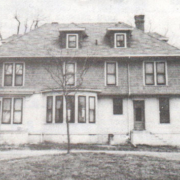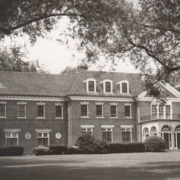Historical Architecture of Grosse Pointe – 257 Ridge Road
Last week we explored 16805 Maumee (formerly 514 Cadieux). This pretty English Cottage style home was completed in 1922 by Charles Crombie for Charles B. Crause. The current owner has lived there for over 50 years.
This week we head to 257 Ridge Road to explore a stunning Tudor style residence designed by architectural legend Albert Kahn. It was completed in 1928-1929 for Jerome Hosmer Remick whose company was one of the largest publishers of sheet music in the world.
257 Ridge Road (original address was 245 Ridge Road) is a magnificent 9,346 sq ft residence constructed of limestone and brick with a slate roof. From our files the cost to build the home in 1928 was $121,571.54 plus $8,774 for an addition to the library. The total was a whopping $130,345,54 (around $2.4m today).
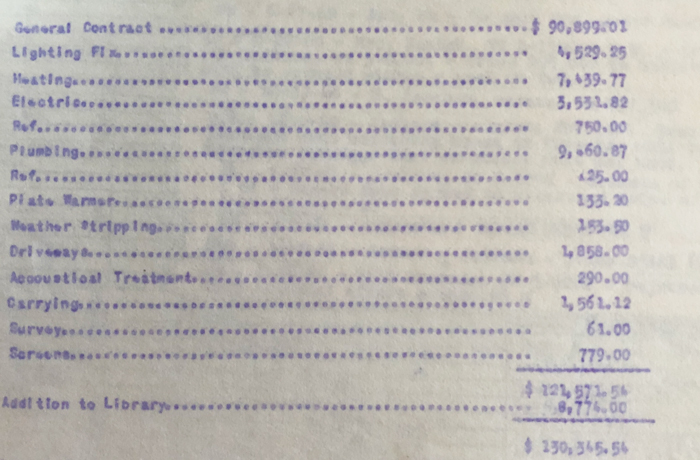
It is acknowledged the home was built like a factory, with solid concrete floors and steel beams. Given Kahn’s experience with designing industrial buildings this isn’t the first residence he designed that has been described in such a way. Upon entering the home, you were greeted by an exquisite marble floored foyer. The expansive hallway then led to the huge 23’ x 35’ living room, which was said to closely resemble the living room in the Edsel & Eleanor Ford Home (at 1100 Lakeshore). It had stunning oak paneling with linen-fold carvings, a sculptured plaster 10’ ceiling, and herringbone-patterned oak floors. Then onto the substantial 20’ x 25’ dining room, the 16’ x 27’ library, along with a large kitchen, the butler’s pantry, the maids dining room, and a service room. On the second floor were five main bedrooms, a large sitting room, plus four smaller bedrooms for maids. At the time of completion Pewabic tile graced all nine bathrooms. There was also an attached four car heated garage with a chauffeur’s apartment located above. Sadly, Jerome Remick didn’t get to enjoy his lavish new home for long, he passed just two years after it was completed. However, his wife Adelaide and youngest son James Albert continued to live at the property for many years.
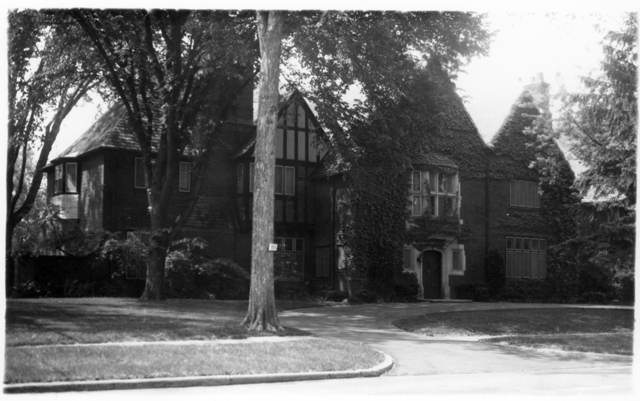
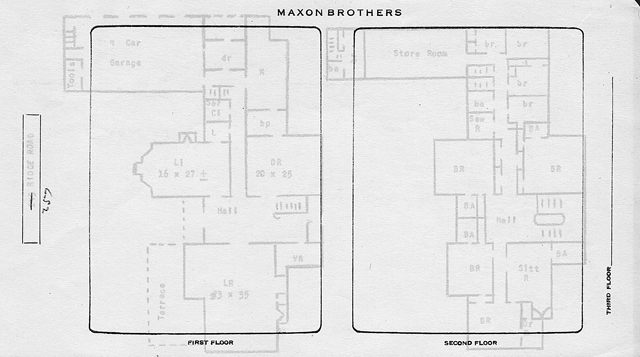
Jerome Remick was president and general manager of the “great publishing house”, Jerome H. Remick & Company. During his career he worked with famous songwriters and published music that influenced popular music trends during the early to mid-twentieth century. As noted by people in the music industry – “Remick’s publication business changed the course of music history throughout the world by making music available through print.” The Remick list of composers and lyricists included: George Gershwin, Harry Warren, Al Dubin, Gus Kahn, and Richard Whiting. It was acknowledged the company was not only one of the largest publishers of sheet music in the world, but it was also one of the United States most extensive retailers (in their field) operating some thirty sales branches, in as many leading cities across the country. Source and image: Successful Men of Michigan (1914). Image courtesy of Wikipedia.
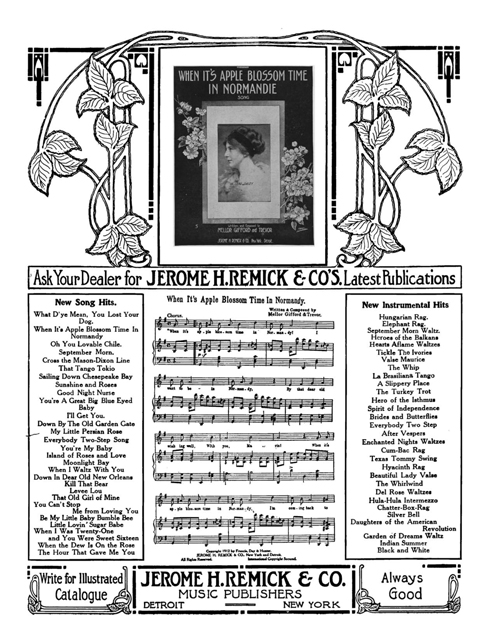
Mr. Remick was born in Detroit on 15 November 1868. His grandfather, Royal Clark Remick, was among the first to recognize the great commercial possibilities of the timber in the state of Michigan. Jerome Remick graduated from Detroit Business University in 1887 and began his career as a messenger at the Commercial National Bank of Detroit. In 1888 he went to work for the Whitney & Remick lumber firm, a family run business started by his grandfather. While with the company he held the positions of sealer, timekeeper, bookkeeper, and supply-purchasing agent. After four years with the company, he traveled extensively overseas returning to Detroit in 1893. By 1896 he was employed by the Detroit Chamber of Commerce. Two years later, in 1898, Mr. Remick purchased a half interest in the Whitney-Warner publishing company of Detroit. Things began to develop quickly after that – in 1900 he became the sole owner of the company, in 1904 it was renamed the Jerome H. Remick & Company, in 1907 Remick commissioned his new three-story building (located at 68 and 70 Farmer St., Detroit), and by 1908 his company was the largest publisher of sheet music in the world. In 1928, because of ill health, Remick sold the company to his vice-president, Jerome Keit. The new firm was called The Remick Corporation. It was taken over by Warner Brothers in 1929. Source and image: Successful Men of Michigan (1914). Image of the building is courtesy of: Detroit Free Press (November 1906).
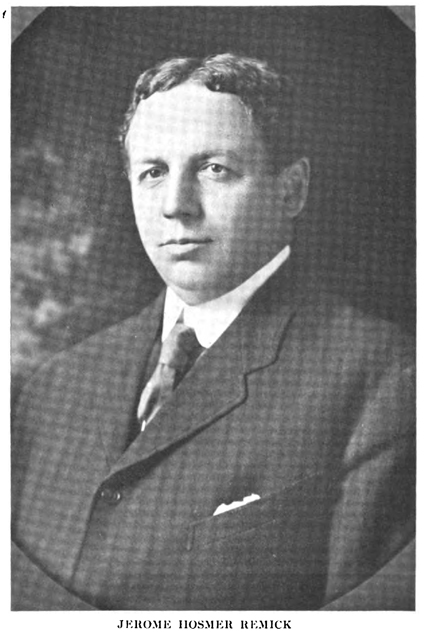

Aside from his publishing company Mr. Remick had “valuable holdings” in several financial, industrial, and commercial enterprises in the city and state, along with being a director and large stockholder in the Detroit Creamery Company. He was widely known and was a popular figure in Detroit, not just as a businessman but also as a philanthropist. Jerome Remick married Adelaide Fenton McCreery in Flint, on 26 June 1895 and together had three children. Image courtesy: Library of Congress.
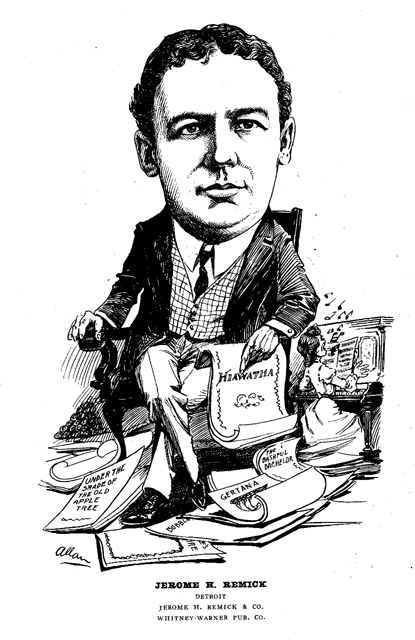
Prior to moving to Grosse Pointe, the Remick’s resided at 1397 Jefferson Avenue. By then two of his three children had left home and were living in Grosse Pointe – His eldest son Jerome Jr. lived at 24 Touraine, his daughter Katherine, having married Edwin R. Stroh in 1918, lived at 37 Beverly Road. His youngest son James Albert moved into his parent’s new home on Ridge Road and was living there at the time of his father’s death, on 15 July 1931. Following her husband’s passing Mrs. Adelaide Remick continued to reside at 257 Ridge up until her death on 27 January 1960. During her life she was an honorary member of the Women’s Association of the Detroit Symphony and a member of the Founders Society of the Detroit Institute of Arts.
Following the passing of Mrs. Remick, the sale of the property was handled by the National Bank of Detroit. It was listed, in May 1960, for $105,000 (around $1.1m today). It was purchased twelve months later by Edward Strang for $55,000 (around $580,000 today). And by 1966, it was owned by Harvey C. Fruehauf Jr. It was last sold in June 2010 to David Montgomery. Image courtesy of GoogleEarth.
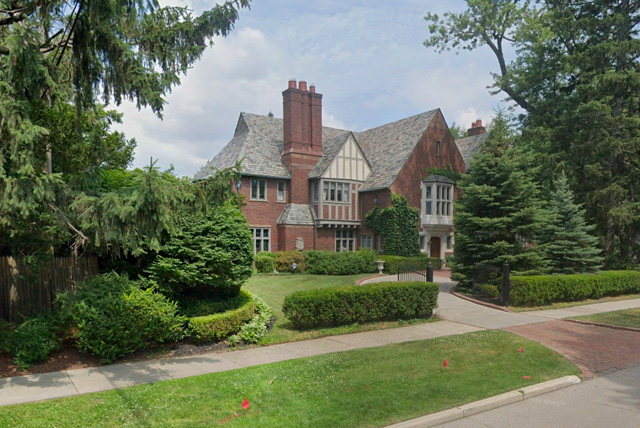
The architect who created 257 Ridge Road was nationally acclaimed Albert Kahn, one of the most influential architects to have graced Detroit. During his career he designed hundreds of buildings including commercial buildings, churches, residences, and groundbreaking industrial buildings. Kahn was born in Rhaunen, Kingdom of Prussia, in 1869. His family immigrated to the U.S., in 1880. As a teenager he landed an apprenticeship with the prestigious firm of Mason & Rice, it was during this period he won a year’s scholarship to study in Europe. In 1895, he and his brother Julius founded Albert Kahn Associates. Together they developed a new type of construction method for industrial buildings that replaced many of the wooden elements (factory walls, roofs etc.) with reinforced concrete. However, it wasn’t just commercial work Kahn was known for, his skills at designing sublime residences were also well established. He designed some stunning homes in Grosse Pointe, and while many have been demolished some of his creations are on still on display including –
- 41 Provencal
- 266 Lakeland
- 1017 Lake Shore
- 257 Ridge
- 880 Lake Shore
- 28 McKinley
- 8 Carmel Lane
- 1100 Lake Shore (The Ford House)
- Grosse Pointe Shores Municipal Building
During his amazing career Albert Kahn would design over 400 buildings in Metro Detroit. You can learn more about his work at HMA’s free lecture on September 25 – it will be presented by Heidi Pfannes, President – Albert Kahn Legacy Foundation. To register please click here.
257 Ridge Road is a superb example of the lavish estates that were created in Grosse Pointe Farms during the 1920’s. This gracious and elegant home has been restored by its current owner to become the stunning residence Jerome Remick intended it to be.
* Photos courtesy of the Higbie Maxon Agney archives unless stated.
** Research, information, and data sources are deemed reliable, but accuracy cannot be fully guaranteed.
Written by Katie Doelle
Copyright © 2024 Katie Doelle

